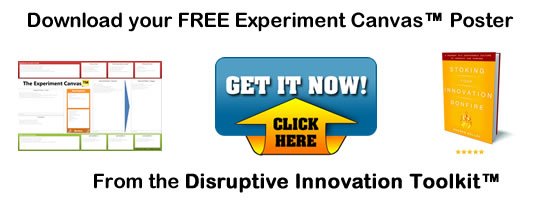One Thing Never to Do When You Negotiate

“Staying away from compromise is the key to getting the most out of a negotiation.”
Negotiation may well be the single most important and yet least understood business and life skill. Most people see negotiation as a conflict between adversaries, a way to one-up an opponent through manipulation. With over 30 years of running businesses, I can tell you that nothing could be further from the truth. Negotiation is not a boxing match; it’s more like a dance between strangers in which the participants need to develop a deep understanding of each other to avoid tripping over themselves. This doesn’t mean that you are going to look deeply into each other’s eyes and end in a warm embrace. The point is not to try to make friends but simply to maximize the value of the outcome to all parties. And here’s the most non-intuitive aspect of doing that: You should never compromise.
“Negotiation is not a boxing match; it’s more like a dance between strangers in which the participants need to develop a deep understanding of each other to avoid tripping over themselves.”
I know, that makes no sense; if neither party compromises, then how do you get to an agreement? But, having been involved in dozens of multimillion-dollar negotiations that span the gambit from funding, to acquisition, to lawsuits, and countless contracts, I’ve found a single overriding truth: Good negotiations–the ones that end up in agreements that people can live with–involve two parties willing to take the time to understand and meet each other’s needs rather than just find some arbitrary point of compromise. That doesn’t mean you’re not a tough. It actually takes a much tougher and more adept negotiator to avoid compromise.
It’s not Pawn Stars (no, really it’s not …).
A compromise is just a lazy way to get past an obstacle; it creates the illusion of progress in the absence of good communication. A negotiation is a process of identifying the value that each party needs and then creatively delivering it. That requires open communication, lots of asking, and a clear understanding of what’s valuable through the eyes of each party. I understand that there are times when compromise seems like the fastest route to a resolution (if you’ve been watching too many episodes of Pawn Stars, you probably feel that way about every negotiation), but that doesn’t mean it’s the best outcome. And, just to be clear, a compromise is giving away something that you need. Getting what you need (not necessarily what you want) is not a compromise. So, know what you need.
“A compromise is just a lazy way to get past an obstacle; it creates the illusion of progress in the absence of good communication.”
I recall one negotiation with a large client interested in purchasing an innovation training program from us. The negotiation dragged on for months. The sticking point was the high price of the program when delivered to tens of thousands of global associates. The staffing and travel made the program incredibly expensive. The client was trying to drive the cost down by reducing the number of people who would be trained, but that just cut into our margins. We were both compromising what we needed–volume of attendees for the client, and margins for us. It seemed like a no-win scenario and the deal was coming apart until I asked a simple question of the client: “What’s most important to you–the number of people you can train within a set budget or the cost per person trained?” The answer was cost per person. The client had other courses that they delivered as part of their educational offerings and the prices were standardized. They couldn’t roll out a course that cost 10 times as much per student. That’s when it dawned on me that we could both lower their costs and increase our margins dramatically by training their existing trainers to deliver the class. The client hadn’t considered that option because our training was very specialized. But we knew how to vet, train, and certify their instructors. We had both kept a critical piece of information hidden and we hadn’t even realized it. Suddenly, a negotiation that had dragged on for months fast-tracked and closed within weeks, resulting in a dramatic increase in value for the client and for us.
Typically, neither party wants to tell the other exactly what they value for fear that they will lose leverage. The reality is that if you do not understand what each other values, or, worse yet, impose your values on the other party, you’re unlikely to arrive at any solution, much less an optimal one. It doesn’t matter if it’s a long-term relationship or a one-time negotiation–if you don’t follow the value, then value is inevitably left on the table.
Five ways to get to value.
So, how do you get to what each party values? The most important thing is to focus relentlessly on questions about value. Once you get to the point where each party’s values start to become clear, you can creatively figure out how to construct the right deal.
“We all like to feel we have the power to bend the universe, even if ever so slightly, to our will. Guess what, if you’ve gotten what you need, the universe will spring back before the ink is dry.”
Here are five simple ways to help you do that and to avoid falling into the trap of compromise.
- Set the tone for the negotiation by making it clear that you want to understand the other party’s constraints, objectives, and values. Don’t be shy asking about budget, comparable services/products, the priorities of values, objectives, vision. It’s amazing how infrequently people even ask about budget!
- Listen and ask at least as much as you talk and tell. My good friend Judith Glaser has written extensively about the notion of “Conversational Intelligence.” Her premise is that we just don’t ask and listen enough. That small insight helped me in one of the most stressful life negotiations I had. Don’t dismiss it.
- Accept that negotiation will always take longer than compromise and that each party will need to expend more energy, but they will also feel better about the result; keep that in mind whenever you feel the need to take a shortcut into compromise. Some years ago I sold a company to a multibillion-dollar acquirer. The person in charge of the acquisition told me that he had worked on deals 10 times as large that took less time. He wanted to compromise. I wanted to maximize value. We did the deal but it took nearly a full year.
- Commit to stay in the negotiation until a resolution is achieved. Do not be the one to walk from the table unless you absolutely, positively intend to never come back.
- Do not compromise unless it is absolutely the last step before signing an agreement. The only exception to the Don’t Compromise rule is if a small compromise will seal the deal. I’ve been involved in many cases where everything is set to go and suddenly someone wants to eke out an ounce of blood just to say they did. Fine, do it. We all like to feel we have the power to bend the universe to our will, even if ever so slightly. Guess what–if you’ve gotten what you need, the universe will spring back before the ink is dry.
This article was originally published on Inc.
Wait! Before you go…
Choose how you want the latest innovation content delivered to you:
- Daily — RSS Feed — Email — Twitter — Facebook — Linkedin Today
- Weekly — Email Newsletter — Free Magazine — Linkedin Group
 Tom Koulopoulos is the author of 10 books and founder of the Delphi Group, a 25-year-old Boston-based think tank and a past Inc. 500 company that focuses on innovation and the future of business. He tweets from @tkspeaks.
Tom Koulopoulos is the author of 10 books and founder of the Delphi Group, a 25-year-old Boston-based think tank and a past Inc. 500 company that focuses on innovation and the future of business. He tweets from @tkspeaks.
NEVER MISS ANOTHER NEWSLETTER!
LATEST BLOGS
Three things you didn’t know about credit cards
Photo by Ales Nesetril on Unsplash Many of us use credit cards regularly. From using them for everyday purchases to…
Read MoreFive CV skills of a business-minded individual
Photo by Scott Graham on Unsplash The skills listed on a CV help employers quickly understand your suitability for a…
Read More


